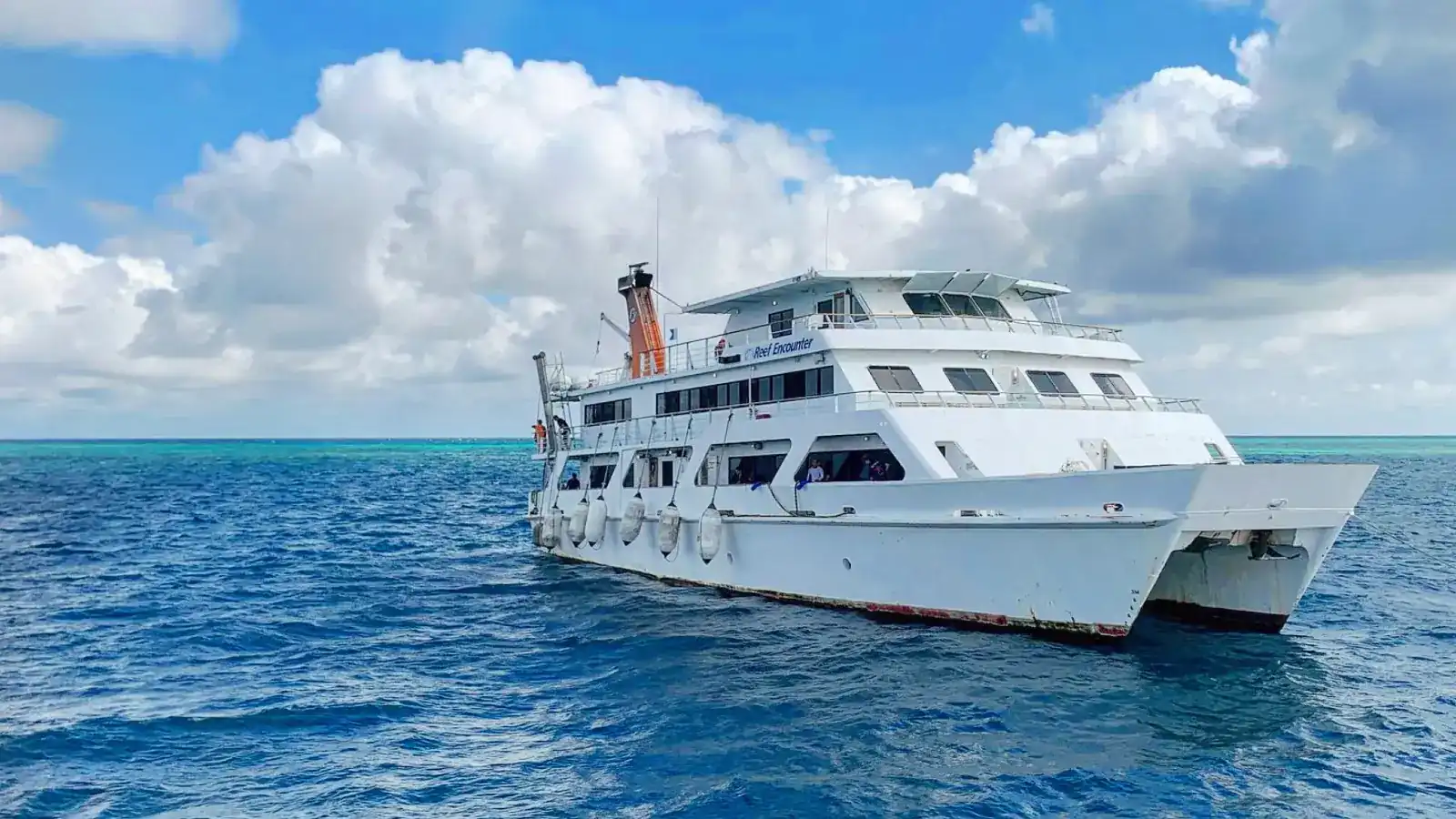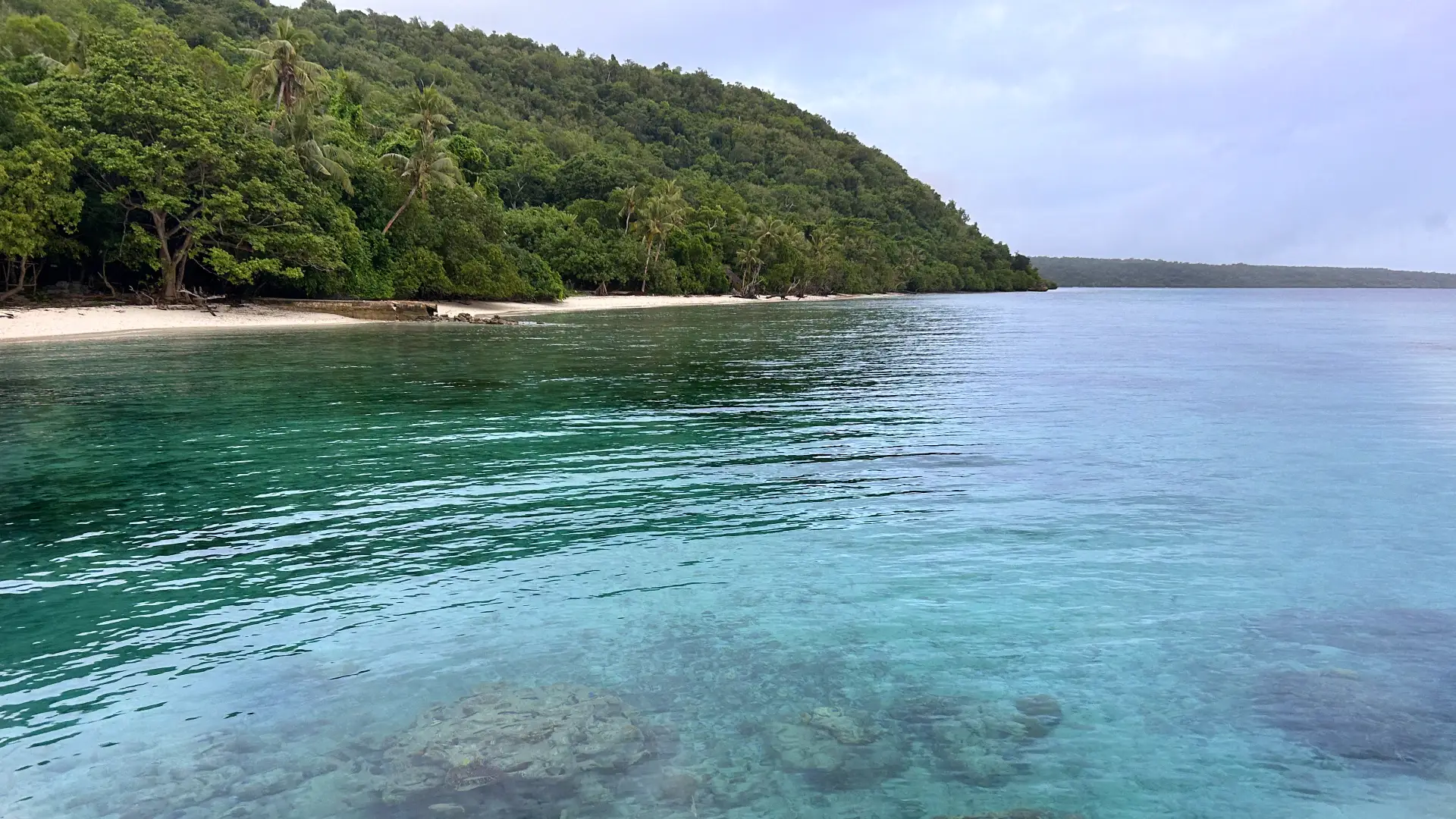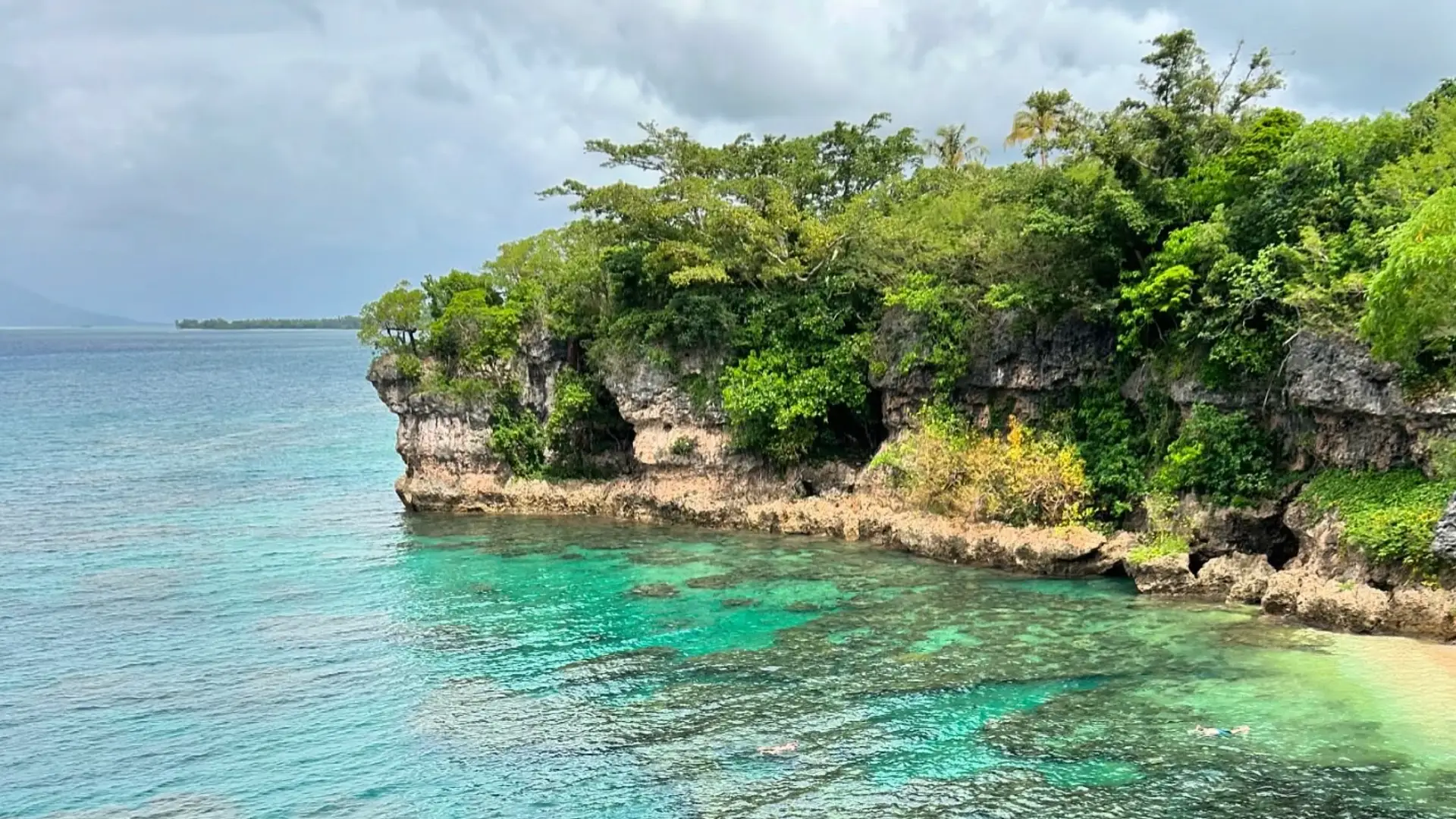A destination on many bucket lists, we’ve been fortunate enough to visit the Great Barrier Reef more than a handful of times. And we’d happily visit it over and over again.
Both a UNESCO World Heritage Site and one of the Seven Natural Wonders, the world’s largest barrier reef is home to thousands of varieties of fish, molluscs and coral.
There’s plenty of operators offering full-day adventures out to the reef from ports in Northern Queensland, but we’ve found spending just the day out there never feels like enough. So, we turned to liveaboards to maximise our time on the water and immerse ourselves in the reef in a way no day tripper can.
Top 3 reasons we love Great Barrier Reef liveaboards
- Night diving. There aren’t any dive centres that currently offer trips out to the reef for evening dives that don’t spend the night out at sea. Likely because it’s unsafe to navigate these waters at night. On all the night dives we’ve been on out here, we moored earlier in the day to get our bearings of the dive site before jumping in again shortly after sunset.
- Dawn diving. With the best parts of the reef about a two-hour journey off-shore from Cairns, day trip boats can’t make it out there for sunrise. And it’s a spectacular time to be in the water.
- Sunsets over the Queensland coast. From 60km off the east coast of Australia, you see just the outline of the lush mountains that lie just inland from Cairns. And as the sun sets behind them, you’ll get a brilliant display of warm reds, pinks and oranges over the Coral Sea. And this is the view you’ll be treated to as you’re gearing up to jump back in the water for your night dives, which take plus just after the sun dips behind the horizon.
Great Barrier Reef liveaboards vs day trips: which is better?
While it definitely depends on what you’re after, personally, and how much time you have, we much prefer liveaboards. This is for a few reasons:
- Especially during the summer months, the weather can be unpredictable, and having two (or more) days gives a greater chance of getting smaller swells and sunnier skies
- Liveaboards offer more opportunity to dive, as day trips are usually limited to just two or three
- Day trips don’t offer the opportunity to go on sunrise or night dives
- We find the value for money is much better, as liveaboards will also include all meals and accommodation
- With fewer dives, day trips can only visit a few dive sites, where liveaboards offer you the chance to see more of the reef
Where exactly is the Great Barrier Reef and where to these liveaboards go?
Jumping into the waters along the massive reef off the Queensland Coast is an experience like no other. You’re instantly surrounded by vibrant corals and fish in just about every shade of the spectrum.
Stretching for more than 2,300 kilometres, the Great Barrier Reef is pretty extensive. Most liveaboards depart from Cairns, in northern Queensland. But there are a few other options that sail from the Townsville area or the Whitsunday Islands.
To get to the reef, you need to travel about 50-60 kilometres east into the Coral Sea. This is where some of the region’s best diving is found, with the highest visibility and most abundant sea and coral life. The trip takes about two hours each way, which can be a lot of time spend on the boat if you’re just doing a day trip.

The Great Barrier Reef liveaboards we’ve tried
Reef Encounter Cairns
What was the trip? 2-day/1-night certified diver (twice)
Current pricing: $585 + $90 for diving* (Return guest discounts are available if you love your experience as much as we did.)
What we find to be the best value trip out to the Great Barrier Reef from Cairns, Reef Encounter has become our go-to liveaboard experience. We’re travelled with it twice before and are booked to go again. We love that it offers daily departures so you can easily slot it into a stay in far north Queensland.
Price-wise, it’s on the lower end, but the experience is top-notch. The rooms we stayed in were akin to what we’d find on a cruise ship. Every room is complete with private bathrooms and windows. (Solo travellers will be paired up with someone else, but if the boat wasn’t full, private rooms were provided. You can also opt to pay a bit extra to guarantee a private cabin.)
There’s a dining room onboard, which also acted as a bit of a gathering area for divers to chat, fill in their log books and talk about what they encountered on each dive.
All the meals served onboard were fresh, delicious and plentiful. There was always tea and coffee available to warm up after a dive.
Every staff member was friendly and made you feel at home, both in and out of the water.
One thing to consider: Reef Encounter is permanently out on the reef. While it will move around to different dive sites, this does mean you have to take a transfer vessel out to it. The process is relatively quick, but it does mean a slightly less than seamless experience.
Would we travel with them again? Yes, and we have! We’ve been out with them twice and have another trip booked in just a few months.
Prodive Cairns
What was the trip? 3-night/2-day certified dive trip and a 3-day/2-night Advanced Open Water course.
Current pricing: $1,000
Offering a two-night trip out to the reef, Prodive Cairns bring the same group on the entire journey without requiring a change from a day to overnight vessel.
(While you can book a one-night trip with Prodive, you’ll actually be on OceanQuest, which is the Divers Den boat that we’ll talk about below.)
A smaller, more intimate boat than Reef Encounter, Prodive offers trips four times a week. Departing Thursday through Sunday, they do fit in nicely with extended long weekends.
Cabins are all twin-share, and if you’re travelling alone you’ll be paired up with another solo traveller. There aren’t private bathrooms aboard these boats, but the shared ones were well-maintained and clean.
One thing to consider: While it may have just been the ones we ended up in, the cabins on these boats are quite small and didn’t have windows. There was also a bunk bed, so if you struggle with ladders you may want to mention this at the time of booking so you don’t end up with a top bunk.
Would we travel with them again? Yes, and we have! We’ve been our with them twice, including to get certified with our PADI Advanced Open Water.
Divers Den Cairns
What was the trip? 2-day/1-night stay for a certified diver
Current pricing: $750
A very similar experience to Reef Encounter’s trip, Divers Den offers daily departures out to its vessel that’s permanently out on the reef offering great flexibility.
The cabins on this ship were probably the nicest we’ve come across on a liveaboard, feeling less like we were on a boat and more like we were in a hotel.
Something we wish was offered back when we joined this trip was the very unique Fluoro Diving option where you can see sea life at night in a way you’ve probably never seen them before.
While this one was an accidental (sort of) trip, it ended up being one we were very happy with. We got the unfortunate call the morning of departure that the company we were supposed to be going with had engine trouble and weren’t going to be making the trip out to the reef. But, luckily, Divers Den had room on their boat if I was happy to make the switch.
One thing to consider: Like Reef Encounter, Ocean Quest (Divers Den’s liveaboard boat) is permanently out on the reef. While it will also move around to different dive sites, this does mean you have to take a transfer vessel out to it. The process here was also relatively quick, but it does mean a slightly less than seamless experience.
Would we travel with them again? Yes.
Rum Runner
What was the trip? 3-day/2-night stay for a certified diver
Current pricing: $590 (or $464 if you don’t need any dive gear)
One of the smallest boats that overnights on the Great Barrier Reef, Rum Runner is a 16-passenger sailboat offering a cosy experience if you’re looking for a small-group adventure.
We were lucky enough to just have a handful of guests on the trip with us. This meant we were each able to get our own sleeping area. (They’re usually sectioned-off areas with bunk beds for two people.)
Blessed with great weather, dining outside on the main deck was a great way to take in the surrounding turquoise seas between sunrise and sunset.
Meals served onboard were simple, but plentiful and the crew was incredibly accommodating and friendly.
One thing to consider: Rum Runner’s boat isn’t a catamaran, so will be a bit rockier than others. While it may have changed since we travelled, getting out of the water was a bit of an unsteady experience. You needed to use a guide rope rather than a solid handle along the ladder. If you’re not a strong swimmer, you may find getting out of the water (especially with dive gear on) a challenge.
Would we travel with them again? While we can’t fault the diving itself, unfortunately we wouldn’t travel with this company again. While the price was very affordable, we much prefer the amenities and sleeping arrangements on other dive boats. The bunk-style beds without privacy wasn’t really to our liking. The beds were narrow and there weren’t proper doors to where you slept, just curtains. If anyone was snoring onboard, you’d hear it no matter where you were sleeping. (Although, this was a couple of years ago, so it may have improved.)

What is the minimum length for a liveaboard?
One night is the minimum for companies that either have boats moored out on the reef permanently. They have transfer boats departing daily. These are a great option for those who haven’t slept on a boat before, or aren’t sure liveaboards are a great option for them.
Some trips that we’ve taken, including Prodive Cairns and Rum Runner, had two-night minimums.
How many dives can you do on a liveaboard?
It depends on the company. But with surface intervals, dive times of about an hour and finding time to eat meals, it’s hard for any of these companies to fit in more than four per day.
On the arrival and departure day, you’ll typically have one fewer dive than if you had a full day on the boat.
An example dive schedule for a two-night trip may look something like this:
- Day 1: Depart the mainland and have a morning dive on arrival at the reef, afternoon dive, night dive
- Day 2: Sunrise dive, morning dive, afternoon dive, night dive
- Day 3: Sunrise dive, morning dive, then return to the mainland
How many dives do you need logged to join a liveaboard?
The best part about liveaboard diving on the Great Barrier Reef is that there’s no requirements in terms of the number of dives you’ve done or your certification level. The one exception here is for night dives; you do need to be a certified diver to join them.
All the trips we’ve taken have had a mix of divers and snorkellers. All the sites are shallow enough to be enjoyed from the surface too. There’s always an instructor on board if anyone does want to give diving a try.
What is the best month to scuba dive the Great Barrier Reef?
We’ve visited the reef just about every month of the year, and they’re all great for different reasons. But, we’d say the cooler months, from May to October, is the best time. The only downside is getting in and out of the water for night dives can be a bit chilly. But we promise it’s worth it for everything else.
Why?
- While the reef does see less precipitation than the mainland, winter gets the least amount of rainfall in northern Queensland
- July is the peak wildlife season, with the highest percentage chance of seeing a vast array of creatures. This includes migrating humpback whales we saw breaching less than 100 metres from our boat on a July trip once. It was nothing short of magic.
- It’s not stinger season, so there’s less of a risk of getting stung (although the chances of stings in general are much lower on the reef as jellyfish do stay closer to shore)
- Visibility is at its best during the winter months
- It’s outside of cyclone season, which lasts from December to April
*Pricing was accurate at the time of publishing this article, but may have changed since it was last updated.




